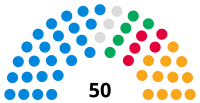
Sussex is an area within South East England which was historically a kingdom and, later, a county. It includes the ceremonial counties of East Sussex and West Sussex.

East Sussex is a ceremonial county in South East England. It is bordered by Kent to the north-east, West Sussex to the west, Surrey to the north-west, and the English Channel to the south. The largest settlement is the city of Brighton and Hove, and the county town is Lewes.

Lewes is the county town of East Sussex, England. The town is the administrative centre of the wider district of the same name and the location of East Sussex County Council at the county hall.

Hove is a seaside resort in East Sussex, England. Alongside Brighton, it is one of the two main parts of the city of Brighton and Hove.
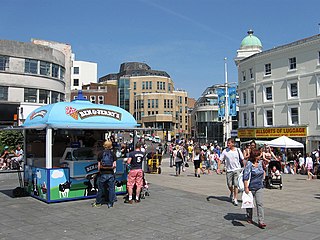
Brighton and Hove is a unitary authority with city status in East Sussex, England. There are multiple villages alongside the seaside resorts of Brighton and Hove in the district. It is administered by Brighton and Hove City Council, which is currently under Labour majority control.

Seaford is a town in East Sussex, England, east of Newhaven and west of Eastbourne.
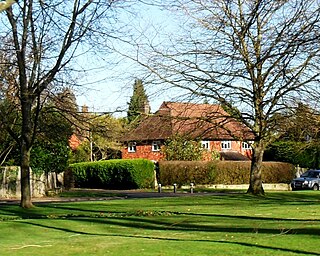
Mid Sussex is a local government district in West Sussex, England. The largest town is Haywards Heath, where the council is based. The district also contains the towns of Burgess Hill and East Grinstead plus surrounding rural areas, including many villages. The district includes part of the South Downs National Park and part of the designated Area of Outstanding Natural Beauty of High Weald, including sections of Ashdown Forest. The district contains most headwaters of the River Ouse. Its largest body of water is Ardingly reservoir which is used by watersports clubs. At the 2021 census the district had a population of 152,949.

Wealden is a local government district in East Sussex, England. Its council is based in Hailsham, the district's largest town. The district also includes the towns of Crowborough, Polegate and Uckfield, along with numerous villages and surrounding rural areas. The district's name comes from the Weald, the landscape and ancient woodland which occupies much of the centre and north of the area.
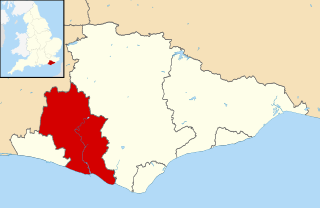
Lewes is a local government district in East Sussex, England. The district is named after the town of Lewes. The largest town is Seaford. The district also includes the towns of Newhaven, Peacehaven and Telscombe and numerous villages and surrounding rural areas. The Council is based at Marine Workshops a former industrial building in Newhaven which it shares with East Sussex Colleges Group.

Brighton Kemptown is a constituency represented in the House of Commons of the UK Parliament since 2017 by Lloyd Russell-Moyle, a Labour Co-op MP. The seat is often referred to as Brighton Kemptown and Peacehaven by local political parties, and will formally adopt that name following the next general election, thanks to the 2023 Periodic Review of Westminster constituencies.

West Sussex County Council is the upper tier local authority for the non-metropolitan county of West Sussex in England.

Brighton and Hove City Council is the local authority for Brighton and Hove, a local government district with city status in the ceremonial county of East Sussex, England. The council is a unitary authority, being a district council which also performs the functions of a county council. The council has been under Labour majority control since 2023. It is based at Hove Town Hall.

East Sussex County Hall is a modern building in St Anne's Crescent, Lewes, East Sussex. It is the headquarters of East Sussex County Council and also serves as the meeting place of Lewes District Council.

Eastbourne Borough Council is the local authority for Eastbourne, a non-metropolitan district with borough status in East Sussex, England. The council meets at Eastbourne Town Hall.
The history of local government in Sussex is unique and complex. Founded as a kingdom in the 5th century, Sussex was annexed by the kingdom of Wessex in the 9th century, which after further developments became the Kingdom of England. It currently corresponds to two counties, East Sussex and West Sussex.

Pelham House is a large red-bricked building at St Andrews Lane in Lewes, East Sussex. The building which was the headquarters of East Sussex County Council from 1938 to 1968, is a Grade II listed building.
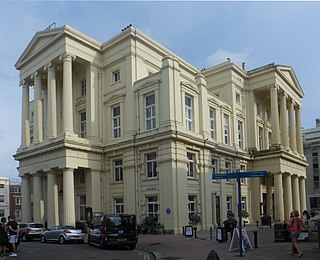
Brighton was a non-metropolitan district with borough status of East Sussex, England covering the town of Brighton. Formed in 1854 as a municipal borough, in 1889 it became a county borough independent of the newly formed East Sussex County Council, and from 1974 until its dissolution in 1997 it was a non-metropolitan district within the county of East Sussex. In 1961, the district had a population of 163,159.


